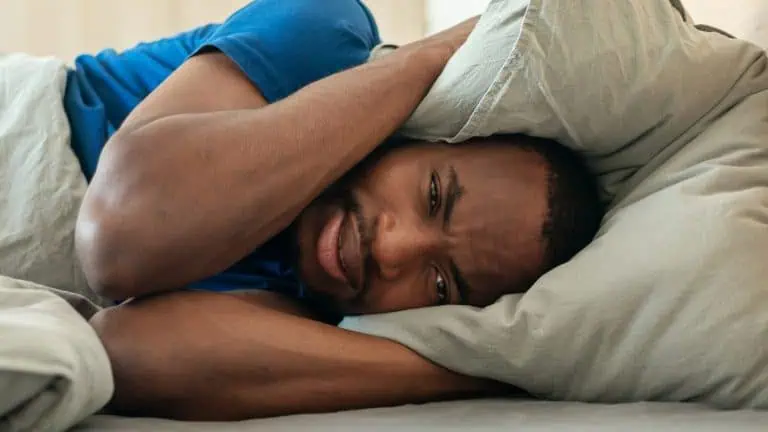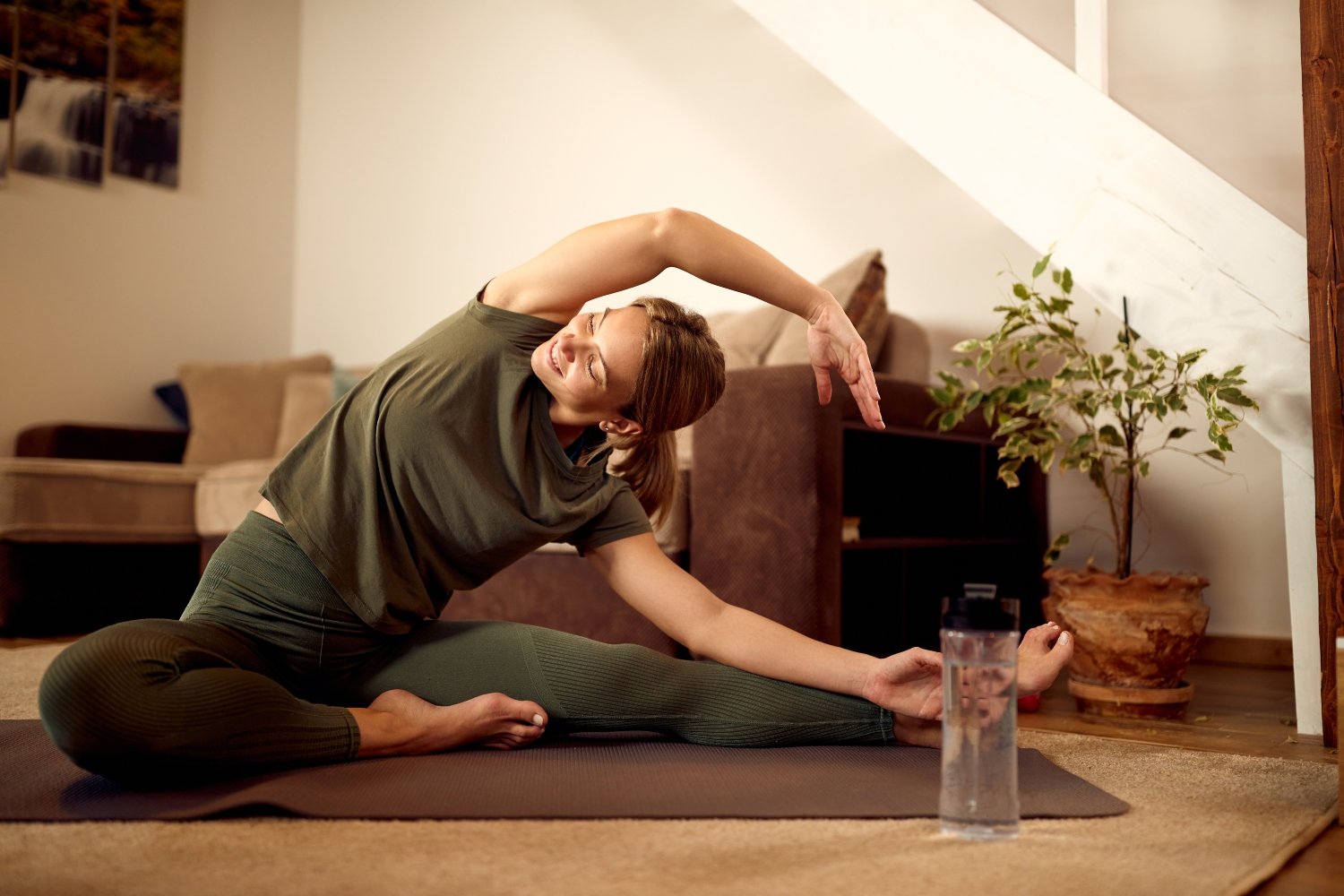
You turn out the light, hoping for rest, but your body has other plans. The clock ticks past midnight, then 2 a.m., then 4 a.m. Your mind replays old arguments, worries about tomorrow, and cravings you thought you left behind. Sleep, once so simple, feels impossible now.
By morning, you wake already exhausted, wondering how you can possibly “put your recovery first” when the nights refuse to give you peace.
Your body won’t quiet, your mind won’t still. The absence of sleep also threatens recovery itself.
Does this sound familiar?
First, you are not alone. Second, there is help out there in figuring out the “why” and moving toward “what can I do about it?”
What disrupts sleep in recovery
Early recovery often feels like living under a sky that never darkens. Withdrawal, whether from alcohol or other substances, rips away the regular rhythms that guide sleep. Insomnia, vivid nightmares, and constant wakefulness are all common in the first days and sometimes months of sobriety. One study finds that insomnia and restless nights are frequent during withdrawal and the earliest stages of healing (Arnedt, 2007).
Even after withdrawal passes, sleep often refuses to come. Many people in recovery continue to suffer from sleep problems long after they stop using. Research also shows that sleep troubles can persist for months, even years, into sobriety.
Why does this happen? Substances change the brain’s chemistry and reverberate through our rhythms. Alcohol, for one, might promise sleep, but it actually does the opposite. It disrupts deep and REM sleep—the very cycles that refresh and heal. Sleep becomes fragmented. Even after quitting, dreams flare in a rebound of REM activity, yet rest remains out of reach.
The fallout is more than fatigue. Sleep deprivation weakens impulse control and invites emotional chaos. In recovery, these cracks can crack open relapse. When sleep fails, vulnerability rises, which can be disastrous for those trying to stay sober (American Academy of Sleep Medicine, 2023).
Stress, trauma, and anxiety often linger too—ghosts that follow into nights. Unresolved trauma and emotional overload can become overwhelming, making sleep the battleground, not refuge.
We’re here to help.
Contact us today for a no-obligation conversation with one of our professionals.
Practical steps toward better sleep
Solutions rarely happen overnight. They unfold slowly, through layers of small changes. Here are paths supported by research and by real people who have walked this road.
1. Sleep hygiene as foundation
Sometimes it means nothing more than restoring day into night. Go to bed at the same hour. Wake at the same hour. Consistency rebuilds rhythm.
Create space for calm. No screens flickering, no worries buzzing, no bright lights holding sway. The bedroom becomes sacred for sleep.
Avoid caffeine, nicotine, and alcohol in the hours before sleep. Keep the room cool, dark, quiet (Sleep Foundation).
When the body senses ritual, the brain begins to trust again. Over time, these small choices stack together and create the kind of stability recovery depends on.
2. Cognitive Behavioural Therapy for Insomnia (CBT-I)

When bad thoughts about sleep feed sleeplessness, CBT-I quietly reshapes them. It invites journal entries and sleep diaries. It teaches sleep restriction to rebuild the connection between bed and slumber. Gradually, it builds back comfort (Walker, 2022).
CBT-I is powerful. It outlasts medication in many cases. It teaches patterns and beliefs that, once changed, carry on long after therapy ends. It stands as a first choice in recovery. More importantly, it gives people back a sense of control over nights that once felt unpredictable.
3. Behavioural sleep medicine
Sometimes, insomnia needs a broader approach. Behavioural sleep medicine looks at sleep through many angles: how we think, how we behave, and the environments we live in. It can help reset rhythms and make sure the mind and body are working together. This kind of care can also be woven in with medical or mental health support, so people are treated as whole individuals rather than just their symptoms.
4. Bright light by day, soft rituals by night
Your body’s sleep clock, what scientists call the circadian rhythm, takes its cues from light. Stepping outside in the morning, even for just ten or fifteen minutes, helps reset your internal clock, so your brain knows when it’s time to be alert and when it’s time to power down. Morning light can boost mood as well, which matters in recovery when motivation can dip.
Night is the opposite signal. Think of it as teaching the body to exhale. A warm shower, a cup of tea, or reading a few pages of a calming book creates a transition from the busyness of the day to the slowness of night. Breathing exercises or meditation can lower heart rate and release tension. These cues, repeated over time, tell the nervous system: it is safe to let go.
5. Movement and gentle exercise

What you do during the day shows up in how you sleep at night. Regular movement helps the body regulate temperature, keeps blood flowing, and eases anxious energy, all of which make it easier to rest (Watson, 2025). A simple walk outdoors offers even more because it pairs exercise with natural light that reinforces the body’s sleep clock. Gentle practices, such as yoga or stretching, can help loosen tension and calm the nervous system.
The timing makes a difference. Hard workouts close to bedtime can leave you wired instead of ready to rest. Try to finish intense exercise earlier in the day, and keep slower, more restorative activities like yoga for the evening when your body is ready to wind down.
6. Music and sound
Sound shapes the body’s rhythm. Slow, steady music, especially at a tempo similar to a resting heart rate, can help calm the mind and body. Research has shown that listening to soft music before bed can lengthen sleep time and improve quality (Cordi, 2019).
Music works partly because it distracts from racing thoughts and lowers arousal in the nervous system. Sound machines or white noise apps can create a consistent backdrop that makes it easier to stay asleep through the night.
The way forward
Recovery is not linear. One night seems better, the next is restless. That is normal. But over time, patterns shift. Sleep patience grows. Withdrawal insomnia is usually temporary. Habits hold healing power.
It can take weeks or months before rhythms settle. In alcohol recovery, REM sleep might flood back with vivid dreams for up to eight weeks. That alone unsettles many.
But there is a steady promise in persistence. Every night you honor rest, even imperfectly, you build resilience. You reclaim rest as an ally, not a distant memory.
A nightly checklist for healing sleep

- Set the same bed and wake time every day, even weekends.
- Anchor yourself early with morning light.
- Create soft transition rituals in the evening: tea, music, breath.
- Keep the bedroom sacred: cool, dark, quiet, free from screens or racing thoughts.
- Move lightly in the day, but not too close to bedtime.
- Try gentle sounds or music before sleep.
- Note everything, from when you go to bed, when you wake, and what thoughts creep in. Use a sleep diary.
- Engage with CBT-I or a sleep professional when needed.
- Use medications only under careful medical supervision and only as a short bridge, not a long-term habit.
- Remember: each night matters. Even small shifts can ripple through the recovery process.
Closing thoughts
Sleep in recovery is fragile. It quivers under stress and craving, yet sleep can also become a sanctuary.
Each night, you show up at your bed, and you practice trust. You teach your mind that it is safe. You tell your body: you can rest. And over time, that act of resting becomes its own kind of bravery. It is as real as any step forward.
Recovery is a waking up. Sleep helps you meet that waking sunrise, ready and present.
Let the night be your ally.
If sleep still feels out of reach, know that support is here. At Centres for Health & Healing, we work with you to restore balance, not just during the day but through the nights that feel longest. Reach out to us—we’ll walk with you as you find your rhythm again.
References:
- Arnedt, J. T., Conroy, D. A., & Brower, K. J. (2007). Treatment options for sleep disturbances during alcohol recovery. Journal of addictive diseases, 26(4), 41–54. https://doi.org/10.1300/J069v26n04_06
- American Academy of Sleep Medicine. (2023, October 23). Understanding the relationship between sleep deprivation and addiction. Sleep Education. https://sleepeducation.org/understanding-relationship-between-sleep-deprivation-addiction/
- Cordi, M. J., Ackermann, S., & Rasch, B. (2019). Effects of Relaxing Music on Healthy Sleep. Scientific reports, 9(1), 9079. https://doi.org/10.1038/s41598-019-45608-y
- Walker, J., Muench, A., Perlis, M. L., & Vargas, I. (2022). Cognitive Behavioural Therapy for Insomnia (CBT-I): A Primer. Klinicheskaia i spetsial’naia psikhologiia = Clinical psychology and special education, 11(2), 123–137. https://doi.org/10.17759/cpse.2022110208
- Watson, S. (2025, February 4). How exercise resets your body clock and improves sleep patterns. News-Medical. https://www.news-medical.net/news/20250204/How-exercise-resets-your-body-clock-and-improves-sleep-patterns.aspx
- Sleep Foundation. (n.d.). Sleep hygiene. Sleep Foundation. https://www.sleepfoundation.org/sleep-hygiene





